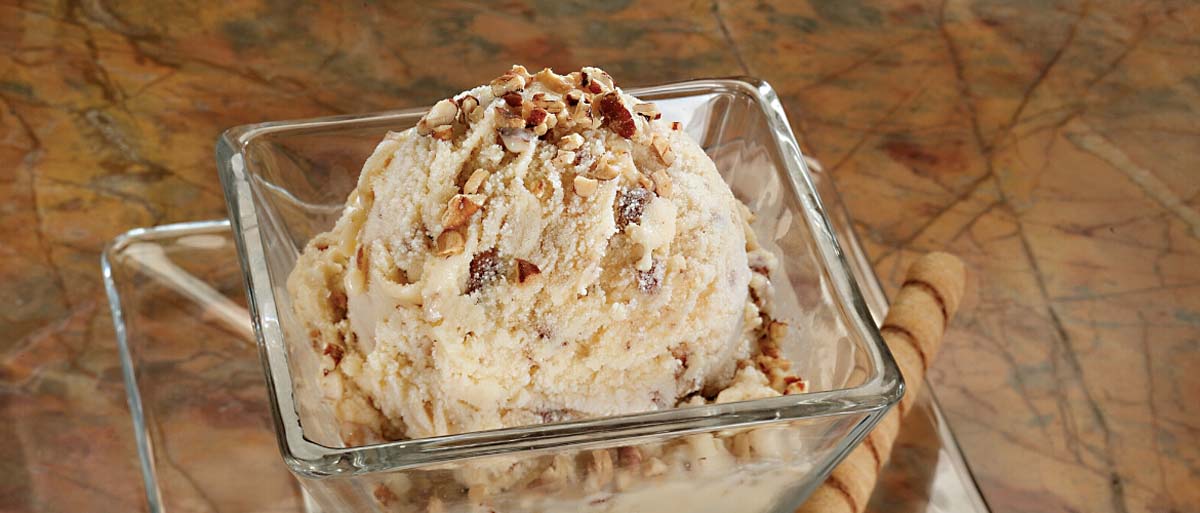What do all frozen desserts have in common?
- One or more dairy ingredients including:
- Milk
- Concentrated fat-free milk
- Cream
- Condensed milk
These sweet treats can also include:
- Sweeteners like sugar or corn syrup
- Flavorings like fruit, vanilla or chocolate
- Stabilizers which help it stay frozen without forming ice crystals
- Emulsifiers which keep the milkfat evenly distributed throughout the mixture
Ice cream must have at least 10% milkfat (about 7 grams of fat per half-cup serving) to be officially labeled “ice cream” according the USDA. Some premium ice creams have 16% milkfat, which adds to an even creamier treat.
If you're looking for a lower fat option, you'll want to look for these kinds of labels:
- Reduced-fat ice cream – 25% less fat than the original product
- Light ice cream – 50% less fat
- Low-fat ice cream – 3 grams of fat or less per serving
- Fat-free ice cream – less than 0.5 grams of fat per serving
High protein ice creams are relatively new products with tons of flavor options. These products boast a protein-packed, low calorie option. The protein boost comes from the power of dairy, often using whey in combination with fat free milk. These products often keep calories low by sweetening with sugar substitutes that can give you an upset stomach if you eat large amounts. Be sure to turn the label around and keep to the suggested serving size.
Frozen yogurt features tangy yogurt as a main ingredient. There are no specific recipe standards for frozen yogurt, so its ingredients and characteristics can vary. Frozen yogurt can also come non-fat, low-fat or full-fat, and can be served soft or hard-frozen.
Frozen custard is like ice cream, but with more egg yolks.
Sherbet has more sugar and water than ice cream, but less fat, with 1% to 2% milkfat.
Label Smart:
- Natural or artificial? - A label saying simply “raspberry ice cream,” is naturally flavored, but an artificially flavored version must be labeled “raspberry-flavored ice cream” or “artificially flavored raspberry ice cream.”
- Nutrition - Ice cream and frozen yogurt provide high-quality protein, vitamin B2 and calcium, so feel free to indulge occasionally. Just remember to check the calorie and fat contents – they’ll vary based on type of milk and the amounts of cream, egg yolks or sugar.
Check out some of our favorite frozen dairy recipes!




